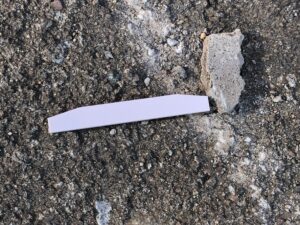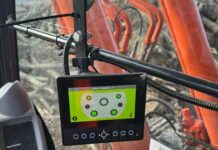When a concrete vibrator manufacturer had difficulties with the vanes installed in its vibrators it sought a solution from Vesconite Bearings – and experienced encouraging results.
Concrete vibrators are used to remove the air bubbles from concrete mixes to reduce the number of voids, making stronger concrete that is less prone to cracking.
Various vibrator designs are used, including vibrators attached to the outside of steel moulds into which concrete is poured to obtain concrete pre-cast elements.
The concrete vibrator manufacturer that eventually tested Vesconite Superlube had a pneumatic vibrator design that was attached to moulds. The proprietary design used vanes to turn an eccentric rotor to create vibration.
However, in-field trials with different vane materials produced unsatisfactory results since vane swelling, delamination and excessive wear occurred.

This is when Vesconite Bearings was consulted and it provided the concrete vibrator manufacturer with samples of Vesconite Superlube, a bearing material with a coefficient of friction lower than polytetrafluoroethylene and providing a much higher load capacity with ultra-low wear rates.
Vesconite Bearings supplied test vanes to the concrete vibrator manufacturer’s specifications in 2021; the vanes were required to have recesses machined out at specific spacing intervals on the flat side of the vane face.
Long-term in-house testing was completed in July 2023. Upon stripping the concrete vibrator and measuring the Vesconite Superlube vanes, negligible to no wear was detected.
Vesconite Bearings senior technical consultant Phillip de Villiers, who has been providing technical support for the project since its inception, believes that the success of Vesconite Superlube in the application can be attributed to several factors.
“Vesconite Superlube’s low coefficient of friction and high load capacity were vital since these characteristics ensured the smooth rotation of the vanes and limited the likelihood of the vanes breaking.”
“Vesconite Superlube’s dimensional stability was also important,” says De Villiers.
The compressed air inside the concrete vibrator is lubricated with oil but, since water and moisture may be present, due to the absence of compressed air dryers at some users, the oil may be washed out and the vanes need to be swell-proof, he comments, noting that having no-swell Vesconite Superlube vanes ensures that the vanes do get stuck inside the rotor slot.
The concrete vibrator manufacturer was pleased with the results of the in-house trial and in-field trials carried out concurrently at multiple construction sites.
The vanes that were installed in the vibrators operated well at 5,000 to 15,000 rpm producing high-quality pre-cast concrete blocks that are used extensively in Europe for the construction of industrial and commercial buildings.
















